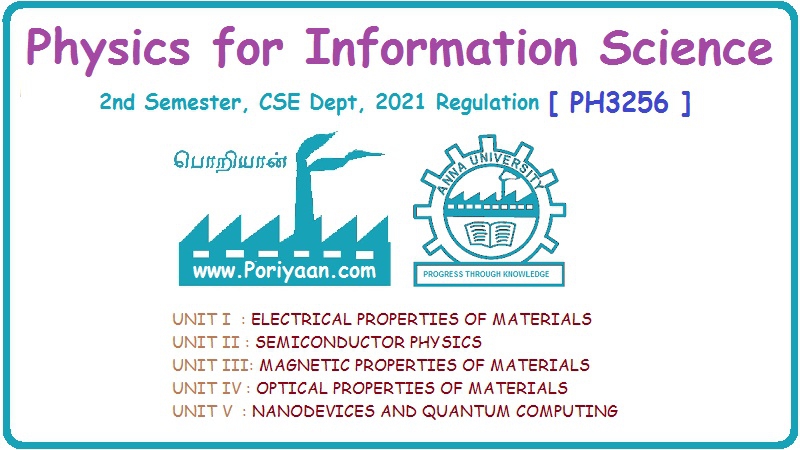Physics for Information Science: Unit IV: Optical Properties of Materials
Photo Current in P-N-Junction Diode [Photo Diode]
Fabrication, Operation, Construction, Working Principle, Types, Advantages, Disadvantage, Applications
When a p-n junction diode is exposed to light (photons), under reverse bias, it produces electron and hole pairs. Due to the flow of these charge carriers, it produces a reverse current.
PHOTO
CURRENT IN P-N-JUNCTION DIODE [PHOTO DIODE]
Principle
When
a p-n junction diode is exposed to light (photons), under reverse bias, it
produces electron and hole pairs. Due to the flow of these charge carriers, it
produces a reverse current.
Fabrication
The
photo-diode is made up of 'p' and 'n' type materials with a small glass window
on the top for the light to pass through it and strike the p-n-junction as
shown in Fig. 4.11. The p-n junction mounted on the insulated (Cathode) substrate
is sealed inside the metal case for safety.
The
symbol of the photo-diode is as shown in Fig. 4.12.
Operation
1.
The photo-diode is reverse biased as shown in Fig. 4.13.
2.
When no light is incident on the p-n junction of the photo-diode, then no
charges are created and therefore no current (or) a very little reverse current
(IR) flows through the circuit.
This
current is called Dark current.
3.
Now, when light is made to incident on the p-n-junction, then each photon
creates an electron-hole pair at the junction.
4.
These photo-generated charge carries move towards the potential and therefore
constitute a current known as photo current.
5.
The photo current increases with the increase in intensity of light falling on
the p-n junction.
6.
The current reaches a maximum and is called as saturation current.
Modes of operation
The
photo-diode operates in 3 modes viz.
1.
Photo-voltaic mode.
2.
Photo-conductive mode.
3.
Avalanche diode mode.
Types
Based
on the modes of operation, there are different types of photo-diodes viz.
1.
PIN [p type - intrinsic - n type] photo diode.
2.
APD [Avalanche pin photo-diode].
3.
Schottky photo-diode.
4.
Solar cell etc.
Advantages
1.
They have long life period.
2.
It is light in weight.
3.
It is very compact (small in size).
4.
It can be rugged mechanically.
5.
Noise of the photo diode is very less.
6.
The response of the photo-diode is wide spectral.
Disadvantages
1.
Here the dark current is temperature dependent.
2.
The thermal stability is very poor.
3.
Amplification is compulsorily required for better performance.
4.
Efficiency is poor in rainy/winter seasons.
Applications
1.
Photo-diodes are used in charge-couple devices [CCD], photo-conductors and
photo-multiplier tubes.
2.
They have wide applications in clocks, radio, camera, street lights, etc.
3.
They are used for lighting regulation and in optical communication systems.
4.
Photo-diodes are used in electronic devices such as smoke detectors, CD
players, TVs, remote controls etc.
5.
In medicine they are used in computed tomography (CT) instrument.
Physics for Information Science: Unit IV: Optical Properties of Materials : Tag: : Fabrication, Operation, Construction, Working Principle, Types, Advantages, Disadvantage, Applications - Photo Current in P-N-Junction Diode [Photo Diode]
Related Topics
Related Subjects
Physics for Information Science
PH3256 2nd Semester CSE Dept | 2021 Regulation | 2nd Semester CSE Dept 2021 Regulation
